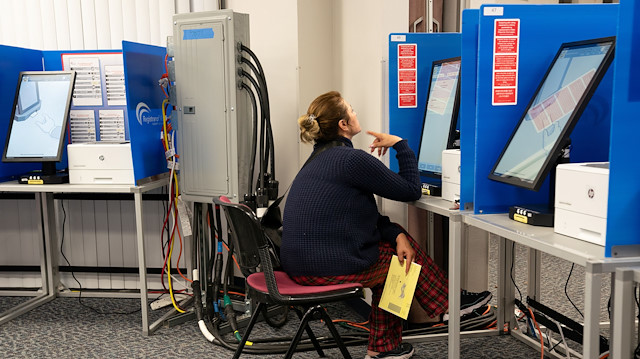

A poll worker begins packing up supplies at a polling cente
'MY WAY OF VOTING'
Election officials said the widespread interest in working the polls has been encouraging and challenging.
In Michigan's rural Isabella County, Clerk Minde Lux said she hired and trained her poll workforce months ago, but her office is still being inundated with calls from prospective poll workers through a recruitment program run by the secretary of state's office. She said she has no more time or money to train additional volunteers.
"We're just trying to keep our heads above the water, but then people get mad at us, like, 'Oh, you don't want us to work the polls,'" she said.
Jacob Major, 17, is one of the new faces who will work the polls in his Milwaukee neighborhood. Major, who now leads the Poll Hero Project's Wisconsin campaign, said many of the recent recruits are vulnerable to last-minute cancellations because young people have less control over their lives. He also is anxious that the city has not yet told him when his training will take place.
Too young to cast a ballot himself, Major said nothing will keep him from showing up on Election Day.
"Being a poll worker and helping so many young people to sign up as poll workers is my way of voting," he said.
In Milwaukee, where the decision to cut the number of polling places from 180 to five in the primary because of lack of poll workers led to disarray, the number of polling places on Nov. 3 will be back up to at least 173, said Jonatan Zuniga, deputy director of the Milwaukee City Election Commission.
Zuniga said nearly 2,600 new poll workers had signed up for training and another 1,000 veteran workers would return, resulting in a big increase over the 2,653 poll workers the city had in 2016, according to data from the U.S. Election Assistance Commission.
Yet with COVID-19 cases rising in Wisconsin, Zuniga said he planned to create a pool of 200 standby workers who would be dispatched on Nov. 3 if others do not show up.
"We'll be monitoring that and see how many back out," he said. "But right now we're in good shape."
#US
#Elections

